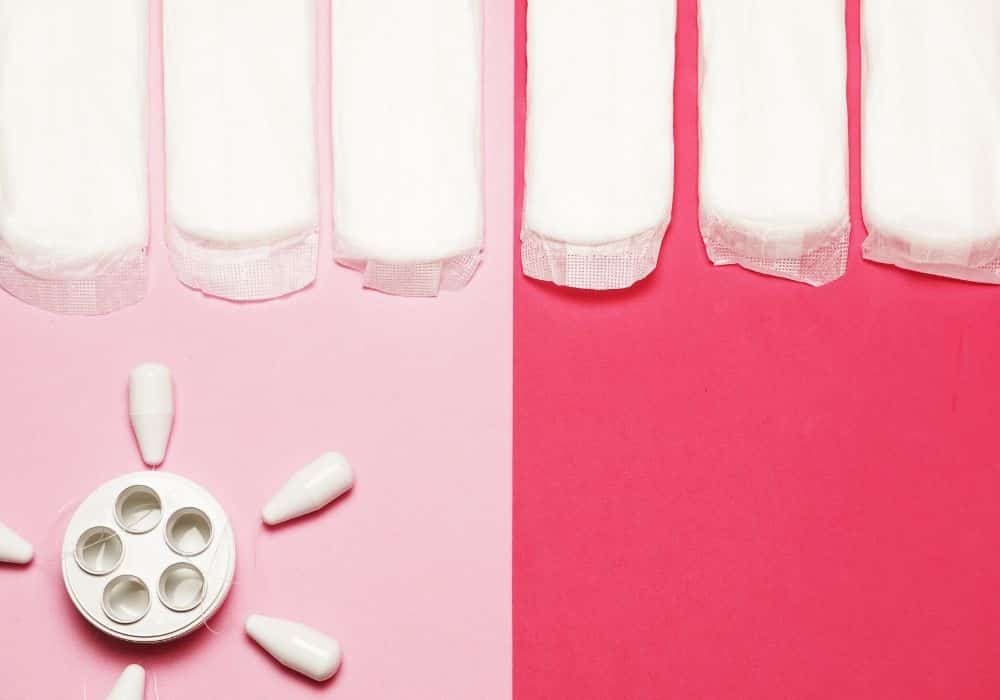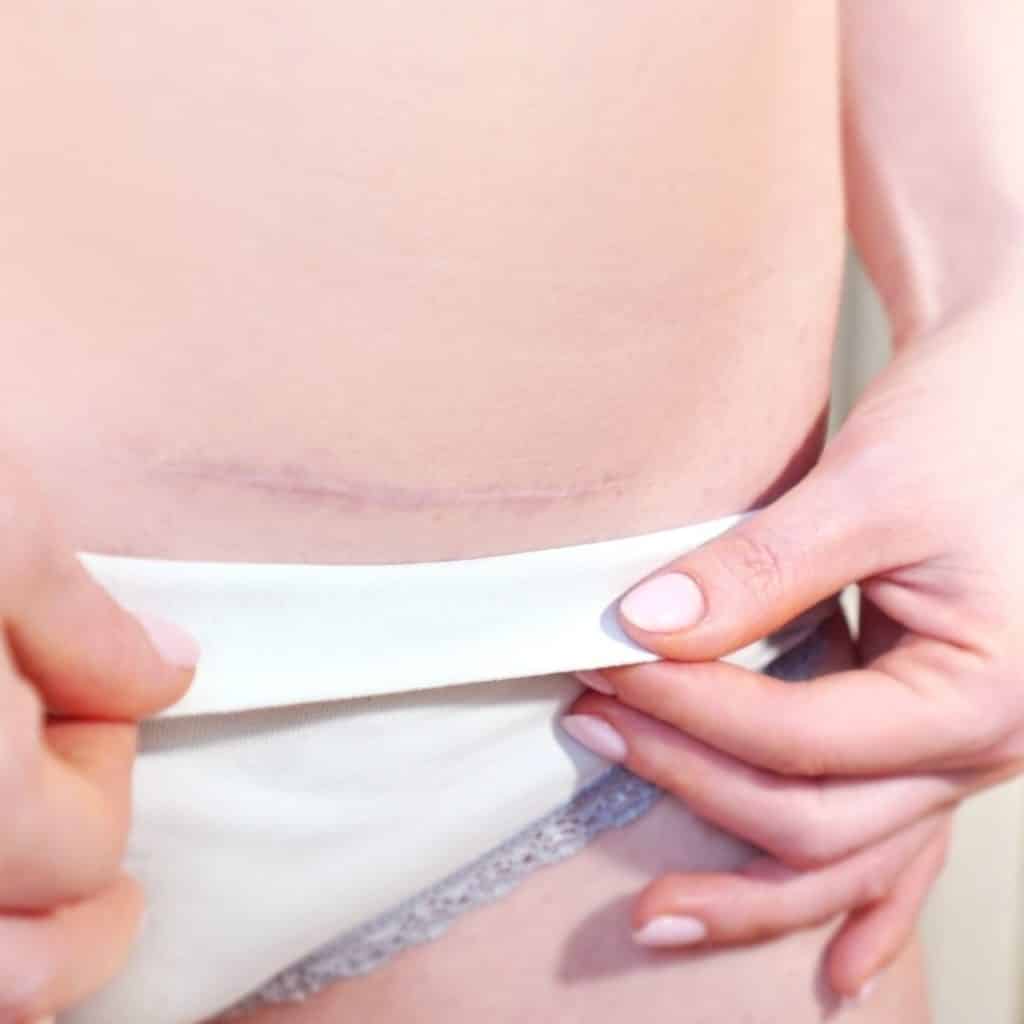The time has arrived to take your precious baby home. You’re ready to get back to more familiar surroundings and establish your new routine with the baby. But first, the nurse needs to complete discharge teaching.
Nurse Honey was a supportive postpartum nurse, but now she’s the gatekeeper between you and your bed. She rattles off some pretty important instructions, but the baby is crying, and you haven’t slept in three days.
You nod to speed up the process, but your stitches hurt now that you’re home. You ask yourself, is this normal? Is this an infection? You’re just not sure if this warrants a call to your OB.
No worries, we got you covered.
Here’s a list of symptoms that are major postpartum care red flags and mean a phone call or portal message to your OB asap:
1. Bleeding should be slowing down.
Eventually, it will transition from bright red blood to brown to pink before it stops altogether. If your bleeding increases each day instead of decreasing, or you start soaking a pad an hour, you need to contact your provider.
You’ll probably pass some blood clots; this is normal. However, if you pass a golf ball-sized or larger clot, you need to contact your provider. Excessive bleeding and blood clots can be a sign of placental retention. Even a tiny placental fragment will confuse the uterus, and it won’t contract effectively.
ADVERTISEMENT
ADVERTISEMENT
2. Call your doctor if you have a fever.
Spoiler alert: healthcare providers consider a fever 100.4° or higher. Fever is a sign of infection, and it needs to be assessed. When you call your provider, include other information like chills. If you’re running on the higher side of average for you—say 99.9°, consider taking off a layer of clothing and hydrating, waiting an hour, and retaking your temperature. Your postpartum hypothalamus is designed to reset your thermostat to warm your infant. It’s possible that you were holding the baby and got overheated or a little dehydrated.
ADVERTISEMENT
3. Suppose you have a persistent headache that doesn’t respond to Tylenol or ibuprofen (unless your doctor instructed you not to, you could take it postpartum).
In that case, you need to contact your provider. Be sure to include if you have any vision changes—blurred vision, double vision, or seeing spots. Also, include information about swelling—hands, feet, ankles, face. Believe it or not, you’re still at risk for pre-eclampsia for six weeks postpartum. So persistent headaches combined with vision changes and swelling are red flags for pre-eclampsia.
4. Pain with urination.
This can be difficult to assess, especially if you tore or had an episiotomy. However, you can expect some stinging with urination.
Protip: use the peri-bottle to squirt warm water while urinating to dilute the urine and decrease the sting. The pain to call about is urethral pain—think urinary tract infection (UTI). A UTI isn’t uncommon after childbirth. UTI symptoms include pain with urination, frequent urination with a feeling that you never really empty your bladder, lower backache, fever, and chills. A day or two of antibiotics will work wonders to turn this around.
ADVERTISEMENT
5. Vaginal discharge with a foul odor.
So, you might notice a little of the regular menstrual blood odor in your discharge, but it should not smell bad. A foul odor is a sign of a puerperal infection (bacteria in the uterus).
6. A deep pain in your calves.
It may be accompanied by redness or swelling. This is a sign of a blood clot. Call immediately. Try to avoid this complication by walking, flexing your feet back toward your head (calf pumps), and staying hydrated.
7. Severe abdominal pain or pain at your incision site.
So, here is the thing that no one prepares you for–you will have cramping postpartum. Some of the cramps can feel almost like contractions. This cramping is normal. A gentle heating pad works wonders. However, the abnormal pain is severe pain distinct from the normal cramping that you can expect.
8. Drainage from your incision site—include details like color, smell, and amount of drainage.
You can put a clean peri-pad over the incision site to better understand the amount and color.
ADVERTISEMENT
9. Incision problems in general—red, swollen, streaking, gaping.
Report it all.
10. Redness, streaking, or hot, painful lump in your breast.
It may feel warm to the touch, tender, and you may feel a lump. Fever, chills, and achiness are signs of mastitis, a breast infection. It is treated with antibiotics. Plugged ducts can lead to mastitis. Try to prevent them by draining one side at each feeding. Also, it would be best to get in the habit of running your hands over your breasts at each feed to feel for plugged ducts.
ADVERTISEMENT
ADVERTISEMENT
11. Vomiting/nausea
12. Chest pain or difficulty breathing.
Honestly, don’t call the provider’s office. Just call 911. This is a sign of a postpartum embolism, and it is a severe, life-threatening emergency.
13. Signs of perinatal mood disorder.
Everyone has heard about postpartum depression, but it’s just one diagnosis housed under the umbrella that is perinatal mood disorders. We expect some emotional highs and lows for the first 2-3 weeks postpartum, but you should return to your baseline. Call your provider if you feel despair/hopelessness, cry a lot, thoughts of self-harm, anxiety, have intrusive thoughts that disturb you, irritability, or checking behavior.


